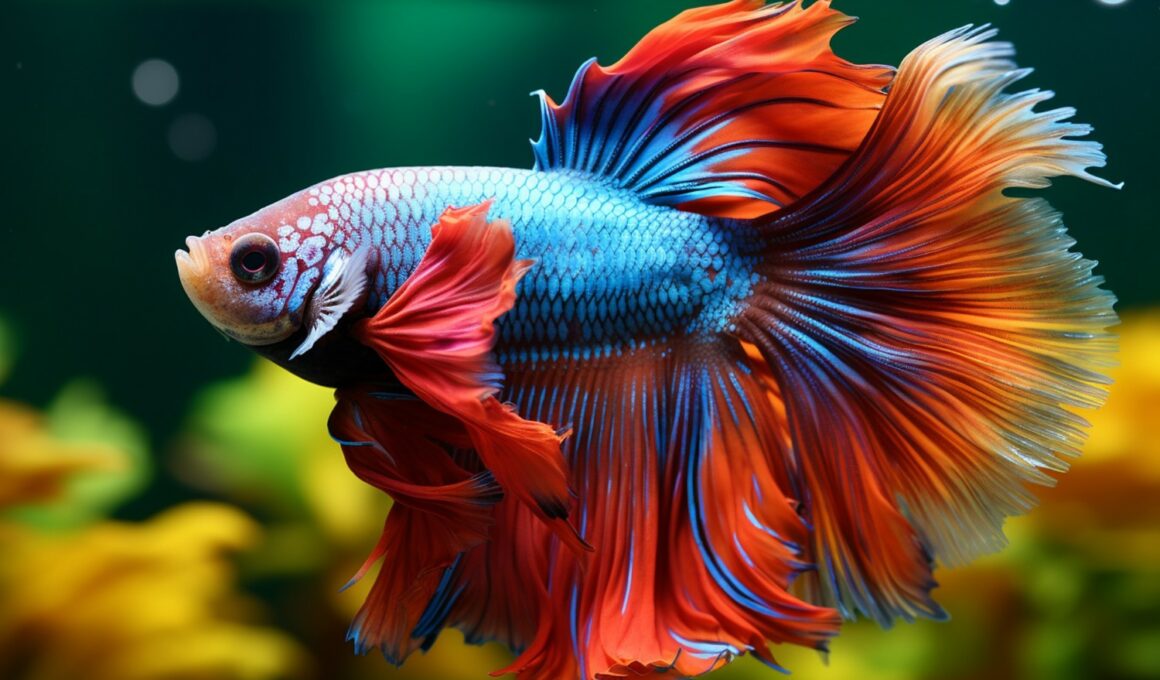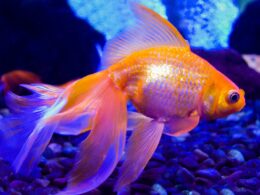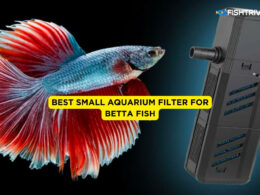In this article Show
If you’re considering welcoming a Betta fish into your home or you’ve already got one and are looking to up your game in caring for it, you’re in the right place.
Betta fish, with their vibrant colors and dynamic personalities, is a popular choice for fish keepers both beginner and seasoned. But their captivating appearance is just one part of the story; understanding their needs and providing the right environment is crucial for their well-being.
In this comprehensive guide, we’ll cover everything you need to know to keep your Betta fish healthy and happy. From tank setup to diet, and even delving into understanding their lifespan, we’ve got it all. So, whether you’re a newbie fish parent or a seasoned aquarist, stick around as we dive into the world of Betta fish care.
What Is Betta Fish?
So, what’s the scoop on Betta fish, anyway? Originating from the shallow waters of Thailand, Cambodia, and Vietnam, these fish are a sight to behold. In their natural habitat, you’d typically find them in rice paddies, ponds, or slow-moving streams.
The Betta fish, or Betta splendens as they are scientifically known, are part of the gourami family. But let’s skip all of that—what you really want to know is what makes them special, right?
When it comes to appearance, Betta fish are like the peacocks of the fish world. Their vibrant colors and elaborate finnage make them stand out in any aquarium.
Most Betta fish are around 2 to 2.5 inches in length, but what they lack in size, they make up for in personality and flare. From deep blues to fiery reds, and even multi-color variations, these little swimmers come in a broad palette of colors.
Personality-wise, Betta fish are known for their feisty nature, especially the males. They’re not called “Siamese fighting fish” for nothing.
Male Bettas are territorial and can be aggressive toward other male Bettas, so keeping them in the same tank without a barrier is a no-go. However, they generally do well with other types of fish and can even recognize their owners!
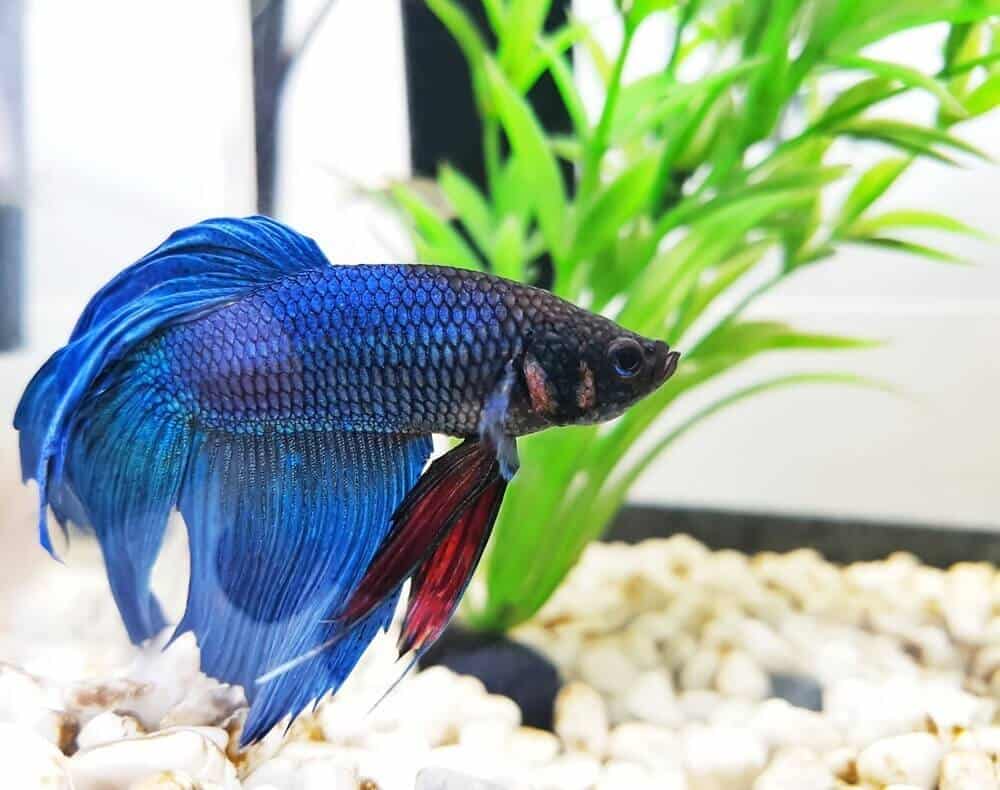
The Ideal Betta Fish Tank Setup
Now that you know what Betta fish are and what makes them unique, let’s dive into the nitty-gritty—setting up the perfect home for your aquatic friend. Trust me, your Betta will thank you for taking the time to get this right. Here’s what you need to consider:
1. Size of the Tank
Let’s debunk a myth right off the bat: Bettas do not thrive in tiny bowls. Sure, they can survive, but we’re aiming for a thriving, happy Betta, not just a surviving one. A minimum tank size of 5 gallons is what I’d recommend. This gives your Betta enough room to explore and also allows for better water quality.
2. Water Parameters
When it comes to water, quality and stability are key. Aim for a pH level between 6.5 and 7.5, and keep the water temperature between 76 and 82°F (24-28°C). Bettas are tropical fish, so they prefer warm water. You might want to invest in a good heater and thermometer to maintain the ideal conditions.
3. Filtration and Aeration
Though Betta fish are relatively low-maintenance, they still need clean water to stay healthy. A gentle filter will do the trick. And when I say gentle, I mean it. Bettas aren’t the strongest swimmers, so a current that’s too strong can stress them out.
4. Substrate and Decorations
Substrate choice can be a matter of personal preference, but softer options like sand or fine gravel are generally better for Bettas. As for decorations, think plants and caves. Silk plants are better than plastic ones, which can tear delicate Betta fins. Just ensure that any decorations don’t have any sharp or rough edges.
The Right Diet for Your Betta Fish
Alright, you’ve got the tank set up, and it’s looking great. But what about feeding your Betta? Trust me, this is one area you don’t want to wing it. Betta fish aren’t too fussy, but a well-balanced diet can go a long way in keeping them healthy and vibrant.
1. Betta Fish Food
When it comes to food options, you’ve got a variety to choose from. There are Betta-specific pellets that offer a balanced diet, and I strongly recommend them for daily feeding.
But here’s the fun part—Bettas also enjoy live or frozen foods like brine shrimp, bloodworms, and daphnia. Think of these as the Betta version of a gourmet meal; not necessarily every day but a nice treat now and then.
2. Feeding Schedule
How often to feed your Betta can depend on its age and activity level, but generally speaking, feeding once or twice a day is the norm. A good rule of thumb is to offer as much as your Betta can eat in about two minutes. Overfeeding can lead to constipation or water quality issues, so less is often more.
3. What Not to Feed Your Betta Fish
And here’s a quick note on what NOT to feed your Betta: Human food and plant matter are a big no-no. Also, avoid generic tropical fish flakes. They don’t provide the right nutrients and can make it difficult for your Betta to maintain its vibrant colors.
Understanding the Betta Fish Lifespan
So, you’ve set up the perfect tank and nailed down the feeding routine. What’s next? Well, let’s talk about how long you can expect your Betta fish to be a part of your life. Spoiler alert: with good care, it can be quite a while!
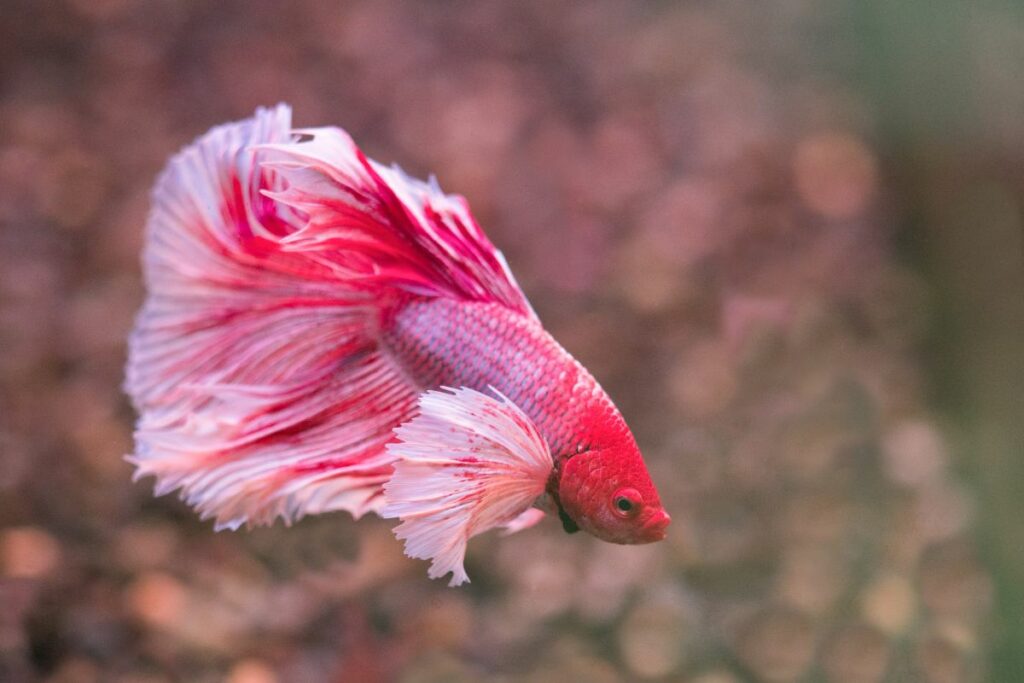
1. Average Lifespan of a Betta Fish
The average lifespan of a well-cared-for Betta fish is around 3 to 5 years. However, some can even reach the ripe old age of 7 with exceptional care! But like any other pet, a Betta’s lifespan can be influenced by a variety of factors, from diet to water quality.
2. Factors Affecting Lifespan
Let’s delve into some of the elements that can impact how long your Betta will live. First up is diet—yes, it’s that important. A well-balanced diet can promote health and longevity.
Second, the quality of the water and the overall tank environment play a critical role. Frequent water changes, stable water parameters, and a clean tank can go a long way. Last but not least, genetics also play a part. Just like people, some fish are naturally hardier than others.
3. Signs of a Healthy Betta Fish
How do you know if your Betta is in tip-top shape? A healthy Betta should have clear eyes, vibrant colors, and an active disposition. If your Betta is exploring its tank, flaring its gills occasionally, and eating well, you’re most likely on the right track.
4. Water Changes and Maintenance
Regular water changes are the backbone of a healthy aquarium. Aim for a 25-30% water change every week. This helps to remove waste and replenish essential minerals. And while you’re at it, give the tank a good scrub to remove any algae or debris.
Tankmates: What Works and What Doesn’t
Thinking of adding some companions to your Betta’s tank? Proceed with caution. As we mentioned earlier, male Bettas are territorial and can get aggressive with similar-looking fish.
However, species like Corydoras catfish, Ghost Shrimp, and certain types of snails can make good tankmates. Just make sure your tank is spacious enough to accommodate everyone comfortably.
Prevention is better than cure, especially in the aquatic world where diseases can spread quickly. Keep an eye out for signs of illness like faded colors, clamped fins, or lethargy. If you spot any of these, isolate the sick fish and consult a vet or an aquarium specialist for treatment options.
Conclusion
Betta fish are an incredible addition to any home, bringing both color and personality to your living space. But like any pet, they require specific care to thrive.
From setting up the ideal tank environment to feeding a balanced diet and understanding their lifespan, it’s all about creating a harmonious home for your finned friend. With the right attention and care, you can enjoy the companionship of your Betta for years to come.






